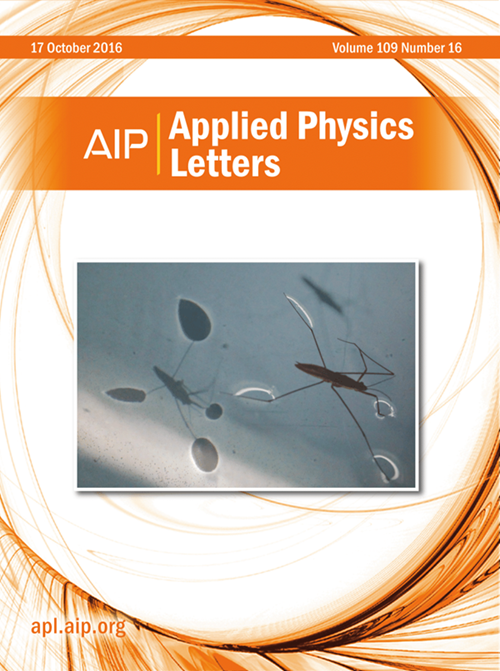RbKNaBi的Janus Rashba半导体:高热电性能和超低晶格导热系数
IF 3.6
2区 物理与天体物理
Q2 PHYSICS, APPLIED
引用次数: 0
摘要
由自旋轨道耦合和反转对称性破坏引起的Rashba效应被认为是由于能带简并性增强而提高热电性能的有效策略。本文利用第一性原理计算和玻尔兹曼输运理论研究了二维Janus RbKNaBi的热电性质。发现二维RbKNaBi是一种Rashba半导体,具有0.215 eV的窄带隙和0.263 eVÅ的大Rashba常数。由于Rashba效应和更长的空穴弛豫时间,p型掺杂比n型掺杂具有更高的功率因数。在300 (500)K时,RbKNaBi的晶格热导率为1.46 (0.87)Wm−1K−1。最终,在500 K时,二维RbKNaBi的p型热电值达到2.50,这在窄间隙半导体或中温条件下是罕见的。这些结果表明,RbKNaBi的二维Janus Rashba半导体是中温热电应用的有希望的候选者。本文章由计算机程序翻译,如有差异,请以英文原文为准。
Janus Rashba semiconductor of RbKNaBi: High thermoelectric performance and ultralow lattice thermal conductivity
The Rashba effect, induced by the spin–orbit coupling and the broken inversion symmetry, has been regarded as an effective strategy to increase thermoelectric performance due to enhanced band degeneracy. We herein use first-principles calculations and Boltzmann transport theory to explore the thermoelectric properties of 2D Janus RbKNaBi. It is found that 2D RbKNaBi is a Rashba semiconductor with a narrow bandgap of 0.215 eV and a large Rashba constant of 0.263 eVÅ. The p-type doping exhibits a higher power factor than the n-type one due to the Rashba effect and longer relaxation time of the hole. Strong anharmonicity is observed due to the weak chemical bond and heavy atomic mass in RbKNaBi, which leads to an ultralow lattice thermal conductivity of 1.46 (0.87) Wm−1K−1 at 300 (500) K. Ultimately, a high p-type thermoelectric figure of merit of 2.50 at 500 K is achieved in 2D RbKNaBi, which is rare in narrow-gap semiconductors or at medium temperature. These results demonstrate that the 2D Janus Rashba semiconductor of RbKNaBi is a promising candidate for medium-temperature thermoelectric applications.
求助全文
通过发布文献求助,成功后即可免费获取论文全文。
去求助
来源期刊

Applied Physics Letters
物理-物理:应用
CiteScore
6.40
自引率
10.00%
发文量
1821
审稿时长
1.6 months
期刊介绍:
Applied Physics Letters (APL) features concise, up-to-date reports on significant new findings in applied physics. Emphasizing rapid dissemination of key data and new physical insights, APL offers prompt publication of new experimental and theoretical papers reporting applications of physics phenomena to all branches of science, engineering, and modern technology.
In addition to regular articles, the journal also publishes invited Fast Track, Perspectives, and in-depth Editorials which report on cutting-edge areas in applied physics.
APL Perspectives are forward-looking invited letters which highlight recent developments or discoveries. Emphasis is placed on very recent developments, potentially disruptive technologies, open questions and possible solutions. They also include a mini-roadmap detailing where the community should direct efforts in order for the phenomena to be viable for application and the challenges associated with meeting that performance threshold. Perspectives are characterized by personal viewpoints and opinions of recognized experts in the field.
Fast Track articles are invited original research articles that report results that are particularly novel and important or provide a significant advancement in an emerging field. Because of the urgency and scientific importance of the work, the peer review process is accelerated. If, during the review process, it becomes apparent that the paper does not meet the Fast Track criterion, it is returned to a normal track.
 求助内容:
求助内容: 应助结果提醒方式:
应助结果提醒方式:


